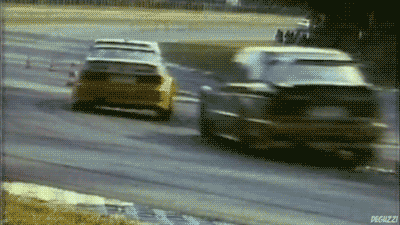I have a video with all of it but here's something quick to read over.
The main thing to start with is they are called pacenotes.
http://en.wikipedia.org/wiki/Pacenotes
From wiki
MC1 100 KL2 100 KR2 200 SQL 100 KR4 50J!->R2+ (D/C!) 100 +SQR 400 F->CR->KL4 100 MC2
Translation:
* From Main Control 1 (start), 100 metres straight to a kink left, severity 2
* 100 metres, kink right severity 2
* 200 m, square left (90°)
* 100 m, kink right severity 4
* 50 m, Jump (caution!) into immediate right hand bend severity 2 tightens (caution, don't cut [the corner, due to hazard on the inside]!)
* 100 m, oversquare right
* 400 m, flat (maximum speed) into crest into kink left severity 4
* 100 m to Main Control 2 (finish)
Turns and Speed... on a scale from 1-6. When they say Right 6 for example it means a gentle gradual turn which you can keep heavy throttle throughout the turn. And a 1, would be a very difficult turn, usually a 90* degree turn or more that requires massive braking. So 6 being easy and down towards 1 being the hardest.
Care : Hazardous
Caution : Very Hazardous
Crest : Rise in terrain hides track beyond.
Jump : Rise in terrain that if taken at speed, wil jump the car into the air. Remember once your tires leave the ground, you have zero control of the car.
Long : A long Corner
Very Long : an extended long corner
Turn : a corner at a road junction
Opens : Corner widens on exit
Tightens : Corner becomes tighter on exit
Narrows : Road Narrows
Don't Cut : Do not drive across the apex of the corner
Straight : Hold a straight line through the coming bends
Bends : Ripples in the terrain which could unsettle your suspension.
Professional drivers also mention distance in Meters.. like
3 left, 100, over crest.
This means, slow down for a left turn, in 100 meters, over the crest.










 Reply With Quote
Reply With Quote